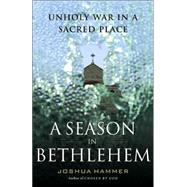Newsweek's Jerusalem bureau chief Joshua Hammer arrived in the West Bank in October 2000 -- just after Ariel Sharon made his inflammatory visit to the Haram al-Sharif, otherwise known as the Temple Mount. Sharon's trip ignited the worst violence

Newsweek's Jerusalem bureau chief Joshua Hammer arrived in the West Bank in October 2000 -- just after Ariel Sharon made his inflammatory visit to the Haram al-Sharif, otherwise known as the Temple Mount. Sharon's trip ignited the worst violence
Contents
Cast of Principal Characters
Key Events in the Israeli-Palestinian Conflict, 19932003
Prologue
1. The Camp
2. The Tribe
3. The Christians
4. The Warlord
5. The Governor
6. The Cell
7. The battle
8. The Siege
Epilogue
Acknowledgments
Index
The New copy of this book will include any supplemental materials advertised. Please check the title of the book to determine if it should include any access cards, study guides, lab manuals, CDs, etc.
The Used, Rental and eBook copies of this book are not guaranteed to include any supplemental materials. Typically, only the book itself is included. This is true even if the title states it includes any access cards, study guides, lab manuals, CDs, etc.